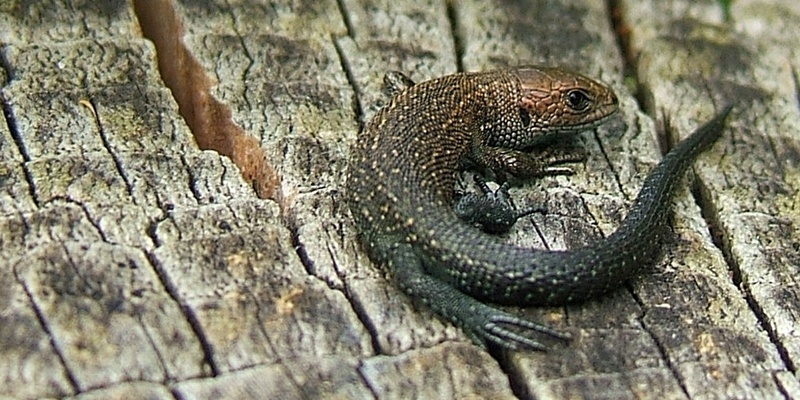Conservationists battling to save lizards in Montrose will next week walk in front of diggers when work begins on a £229,000 cycle path.
Trevor Rose of Friends of Angus Herpetofauna has been in last-minute discussions with Angus Council to save any creatures that flee the disruption.
Work began this week to cut down bushes and diggers are set to start work on Monday at the site in Kinnaber, which is an area populated by good numbers of common lizards, a species which is protected against intentional killing and injuring.
“The latest I have is that we will be permitted to monitor the excavation in the hope of finding lizards as they flee from the earth as it is removed, but this will be limited to just two or three named volunteers,” said Mr Rose.
“Excavation will now commence next week, probably starting on Monday for two to three days.”
The path and cycleway stretches from Montrose to the Northwater Viaduct to create an off-road path for cyclists and pedestrians.
The path will begin in Broomfield, Montrose, and will be incorporated into land at the former airfield and land at Kinnaber before joining on to the path at the southern end of the viaduct.
From the north end of the viaduct the cycleway will follow the public road to St Cyrus to become part of the Sustrans national cycle route and the North Sea Cycle Route.
Mr Rose added, “Partly good news is that the new path itself will be biased towards the west of the old railway embankment, rather than along the centre.
“This means only the gorse to the west facing side of the embankment will be removed, leaving a strip of gorse to the east facing side untouched.Influence working”I am also meeting with Angus council staff to discuss avoiding the ‘hotspot’ just inside the steel gate at the main car park end.
“It seems our efforts are at least influencing what happens with the site, so many thanks again for your involvement which has been key to persuading Angus Council that there is an issue needing addressed.”
Volunteers have been working for the past fortnight to capture any lizards which may be nesting behind the dunes at Kinnaber.
“On the relocation front I believe our total relocated is now up to six,” said Mr Rose.
“Now we can see the path running with a westerly bias, we should concentrate our efforts on the remaining standing gorse on that side only, and leave any animals seen on the easterly side in situ.
“As we know, the lizard’s territories are small so they should be reasonably safe in the gorse which remains standing and untouched, and those animals will help to re-colonise the site once it is re-aligned and complete.
“I think we will leave the refugia on the easterly side as they are at present, as in time they may help to hold any resident lizards on that side.
“However, it will not be necessary to relocate lizards from the easterly side.
“We can continue to monitor and relocate any we find from the westerly edge, including in the cut areas when gorse clearing is complete, at least up to April 18 when excavation work begins.”
Kinnaber Moor is a site of around 200 hectares, with populations of common lizards throughout.
As common lizards are protected against intentional killing and injuring, the council were obliged to accommodate mitigation measures.
A local council ranger was recruited by the council to lay refugia on the proposed construction site, a strip approximately 500m long and 10m wide.
Common lizards are numerous in the Glens and foothills of the nearby Cairngorms, but are fragmented and rare on the lowlands and coastal areas.
“Our short-term and emergency plan is to capture as many lizards as possible and move them to other areas of the moor, suitably far away that they won’t migrate back before the work on the cycle path has finished,” Mr Rose said.
Image used under Creative Commons licence courtesy of Flickr user Squeezyboy.
